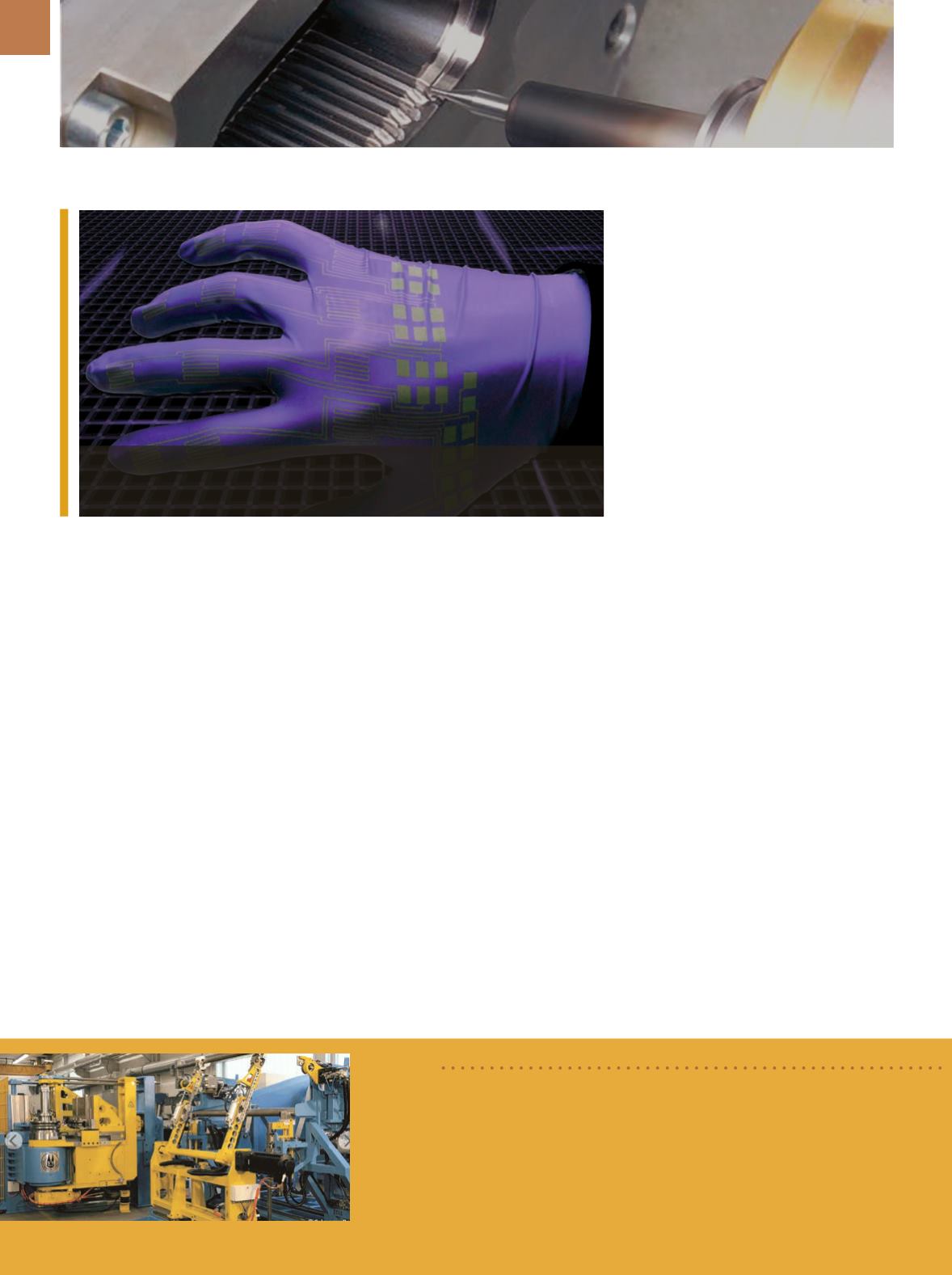

A D V A N C E D M A T E R I A L S & P R O C E S S E S | J U N E 2 0 1 5
1 2
PROCESS TECHNOLOGY
BRIEF
Messe Düsseldorf,
Germany, an international trade show organizer for the met-
allurgy industry, launched a new sector portal called
Metsearch,
which offers a
comprehensive product and company database for various metalworking dis-
ciplines. The portal features sector and company news along with background
information on the industrial segments of national and international trade fairs,
as well as monthly highlights about different topics of interest to metallurgists.
metsearch.net.“Conductors made of liquid metal can
stretch and deform without breaking.”
One potential manufacturing ap-
proach uses inkjet printing to create
devices made of liquid alloys. Printable
ink is made by dispersing the liquid
metal in a nonmetallic solvent using
ultrasound, which breaks up the bulk
liquid metal into nanoparticles. This
nanoparticle-filled ink is compatible
with inkjet printing.
“Liquid metal in its native form is
not inkjet-able,” says Kramer. “So what
we do is create liquid metal nanoparti-
cles small enough to pass through an
inkjet nozzle. Sonicating liquid metal in
a carrier solvent, such as ethanol, both
creates nanoparticles and disperses
them in the solvent. Then we can print
the ink onto any substrate. Ethanol
evaporates away so just liquid metal
nanoparticles are left on a surface.”
After printing, the nanoparticles
must be rejoined by applying light
pressure, making it conductive. This
step is necessary because liquid-metal
nanoparticles are initially coated with
oxidized gallium, which prevents elec-
trical conductivity. It is possible to select
which portions to activate depending
on particular designs, suggesting that
a blank film might be manufactured for
a multitude of potential applications.
The process could make it possible to
rapidly mass-produce large quantities
of the film. Future research will explore
how the interaction between the ink and
the surface being printed on might be
conducive to making specific types of
devices.
For more information: Rebecca
Kramer, 765.494.2219,
rebeccakramer@ purdue.edu,
www.purdue.edu.
NEW PATENT COVERS
ALUMINUM ACID ETCHING
Houghton International Inc. and
Houghton Technical Corp., Valley Forge,
Pa., announce that the Canadian Patent
Office issued Patent No. 2,618,915,
Meth-
ods and Compositions for Acid Treatment
of a Metal Surface.
This patent is directed
towards Houghton’s technology for alu-
minum acid etching, which is formulat-
ed to provide a uniform fine matte satin
finish on aluminumand aluminumalloys
prior to anodizing and/or coloring. Unlike
alkaline etching, this technology produc-
es a superior matte finish while signifi-
cantly reducing aluminum removal and
sludge waste. It is performed at lower
temperatures and requires less process-
ing time compared to conventional caus-
tic etch systems.
houghtonintl.com.
Artistic rendering depicts electronic devices created using a new inkjet-printing
technology to produce circuits made of liquid-metal alloys for soft robots and
flexible electronics. Courtesy of Alex Bottiglio/Purdue.
INKJET PRINTING WITH
LIQUID METAL
New research shows how inkjet-
printing technology can be used to
mass-produce electronic circuits made
of liquid-metal alloys for soft robots
and flexible electronics. Elastic technol-
ogies could enable a new class of pli-
able robots and stretchable garments
that people might wear to interact with
computers or for therapeutic purpos-
es. However, new manufacturing tech-
niques must be developed before soft
machines become commercially fea-
sible, says Rebecca Kramer, assistant
professor of mechanical engineering at
Purdue University, West Lafayette, Ind.
“We want to create stretchable
electronics that might be compatible
with soft machines, such as robots
that need to squeeze through small
spaces, or wearable technologies that
don’t restrict motion,” explains Kramer.


















